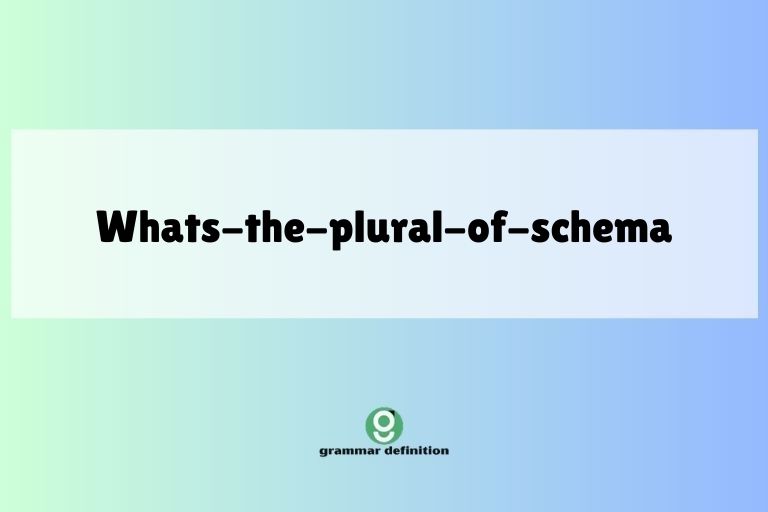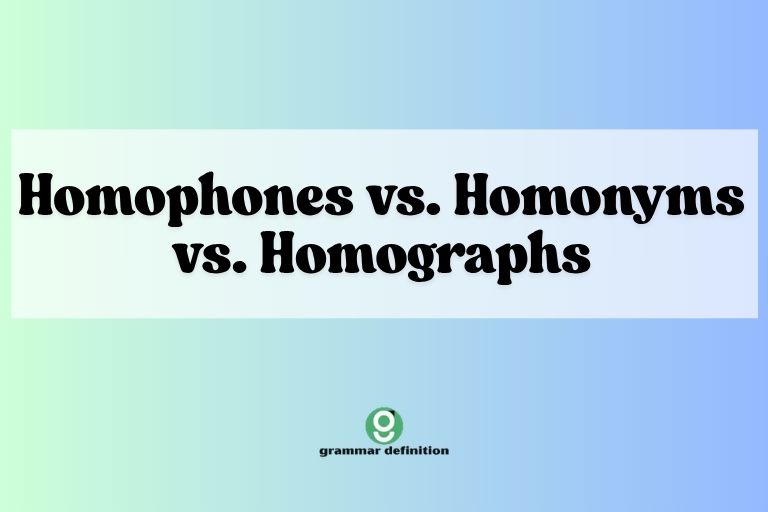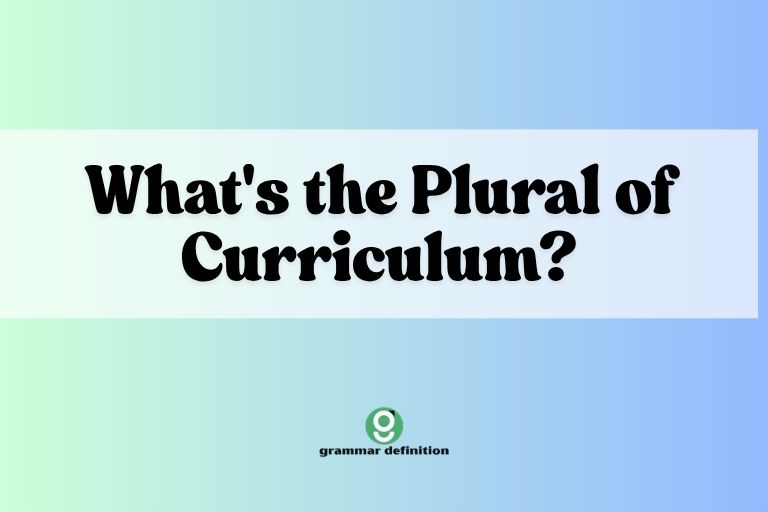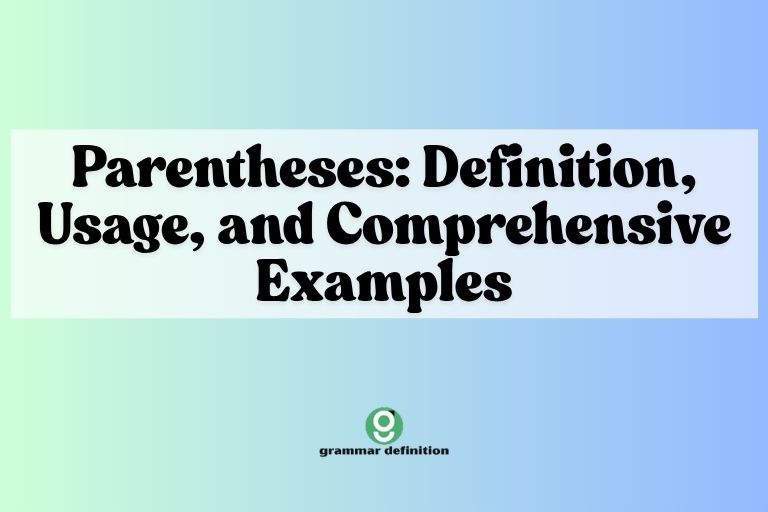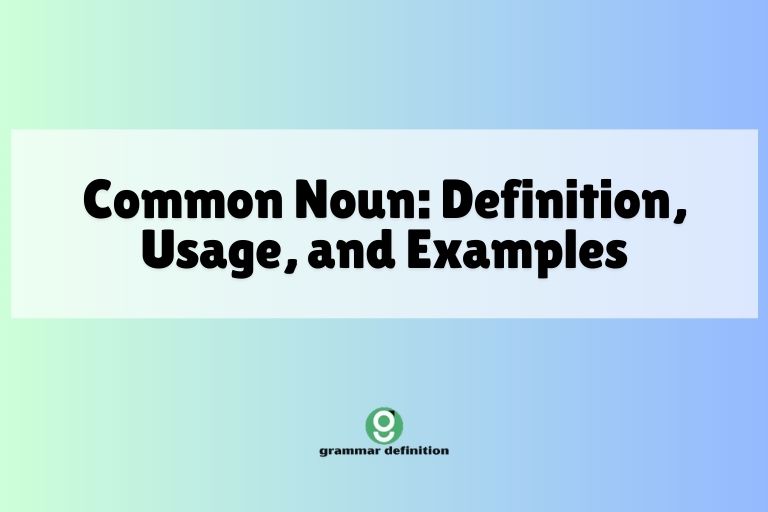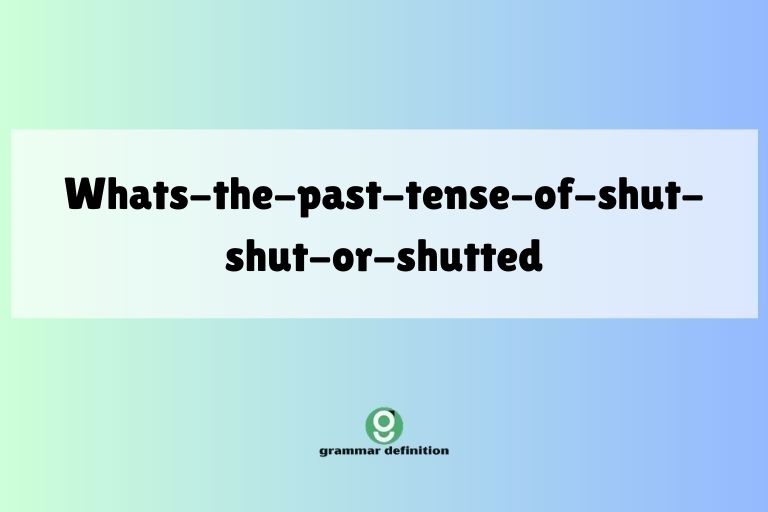Hyphens: Definition, Usage, and Examples for Clear Writing
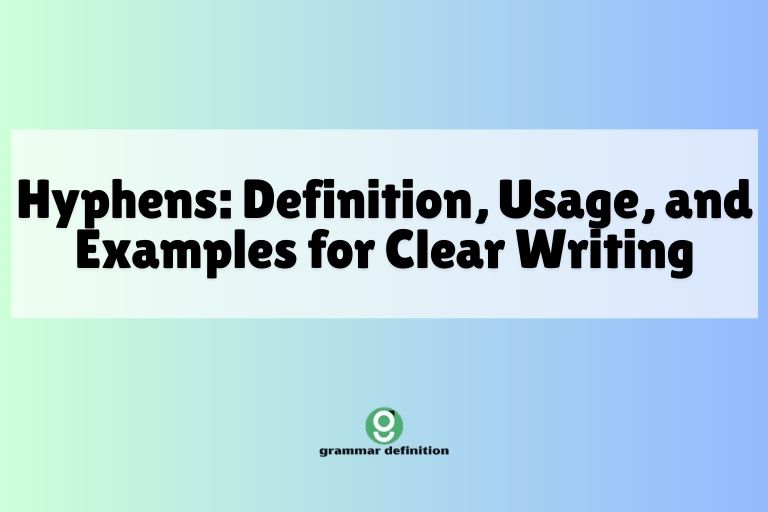
The hyphen, a small but mighty punctuation mark, plays a crucial role in English grammar. It connects words, clarifies meaning, and enhances readability.
Mastering hyphen usage is essential for clear and effective communication, whether you’re writing academic papers, professional reports, or creative fiction. This article provides a comprehensive guide to hyphens, covering their definition, usage rules, common mistakes, and advanced applications.
It is designed for English language learners, writers, editors, and anyone who wants to improve their understanding of this important punctuation mark.
This guide will help you understand the nuances of hyphen use, ensuring your writing is both grammatically correct and easy to understand. By the end of this article, you’ll be equipped with the knowledge and skills to use hyphens confidently and correctly in all your writing endeavors.
Table of Contents
- Definition of a Hyphen
- Structural Breakdown
- Types of Hyphens
- Examples of Hyphen Usage
- Usage Rules for Hyphens
- Common Mistakes with Hyphens
- Practice Exercises
- Advanced Topics
- Frequently Asked Questions (FAQ)
- Conclusion
Definition of a Hyphen
A hyphen (-) is a punctuation mark that connects two or more words together to form a single compound word or phrase. It is shorter than both the en dash (–) and the em dash (—).
The primary function of a hyphen is to show that the words it connects are meant to be understood as a unit, modifying another word or acting as a single entity. Hyphens are crucial for clarity, preventing misinterpretations and ensuring smooth reading.
In essence, a hyphen acts as a bridge, linking words and creating new meanings or emphasizing relationships between them. Its presence or absence can significantly alter the meaning of a sentence, highlighting the importance of understanding its proper usage.
Structural Breakdown
The structure involving hyphens is relatively straightforward but crucial for understanding their function. A hyphenated word or phrase typically consists of two or more words connected by hyphens, acting as a single unit within a sentence.
Here’s a breakdown of the structural elements:
- Words: The individual words that are being connected.
- Hyphen(s): The punctuation mark that joins the words together.
- Combined Meaning: The new meaning that is created by combining the words.
For example, in the phrase “well-being,” “well” and “being” are the individual words, the hyphen connects them, and the combined meaning refers to a state of being comfortable, healthy, or happy.
Understanding this basic structure is the foundation for mastering hyphen usage. By recognizing how words combine to create new meanings, you can better determine when and where to use hyphens effectively.
Types of Hyphens
While the hyphen itself is a single character, its usage can be categorized based on the purpose it serves. Understanding these categories helps in applying the correct hyphenation rules.
1. Compound Adjectives
Compound adjectives are two or more words that work together to modify a noun. These are often hyphenated when they appear before the noun they modify.
Example: a well-known author, a state-of-the-art facility.
2. Compound Nouns
Some compound nouns are hyphenated, although this is becoming less common as language evolves. It’s important to consult a dictionary to determine whether a particular compound noun requires a hyphen.
Example: mother-in-law, passer-by.
3. Suspended Hyphens
Suspended hyphens, also known as hanging hyphens, are used when a common word is omitted from a series of hyphenated words.
Example: first- and second-class tickets (instead of first-class and second-class tickets).
4. Prefixes and Suffixes
Hyphens are sometimes used with prefixes and suffixes, particularly when the prefix ends with the same letter as the first letter of the root word or to avoid confusion.
Example: re-enter, co-op.
5. Word Breaks
Hyphens are used to break words at the end of a line when they don’t fit entirely on that line. This is more common in printed materials than in digital text.
Example: “The conference was incredibly in-
teresting.”
Examples of Hyphen Usage
To illustrate the various uses of hyphens, let’s examine several examples categorized by their function. These examples will provide a clearer understanding of how hyphens contribute to the clarity and precision of written English.
Examples of Compound Adjectives
Compound adjectives are frequently hyphenated when they precede the noun they modify. Here’s a table with numerous examples:
| Compound Adjective | Example Sentence |
|---|---|
| well-known | She is a well-known actress. |
| state-of-the-art | The hospital has state-of-the-art equipment. |
| long-term | We need a long-term solution to this problem. |
| short-term | This is only a short-term fix. |
| high-quality | They sell high-quality products. |
| low-quality | The low-quality material tore easily. |
| full-time | She works a full-time job. |
| part-time | He has a part-time position at the store. |
| easy-to-use | The software is easy-to-use. |
| hard-working | He is a hard-working employee. |
| fast-paced | The city has a fast-paced lifestyle. |
| slow-moving | The slow-moving traffic caused delays. |
| open-minded | It’s important to be open-minded when considering new ideas. |
| narrow-minded | His narrow-minded views were outdated. |
| middle-class | They belong to the middle-class society. |
| upper-class | The upper-class lifestyle is often envied. |
| first-class | He traveled in first-class. |
| second-class | She received second-class treatment. |
| blue-eyed | The blue-eyed child smiled. |
| left-handed | He is a left-handed baseball player. |
| right-handed | She is a right-handed tennis player. |
| self-aware | She is a self-aware individual. |
| cross-cultural | The program promotes cross-cultural understanding. |
| eco-friendly | They sell eco-friendly products. |
| user-friendly | The software is user-friendly. |
| forward-thinking | The company has a forward-thinking approach. |
| ground-breaking | This is a ground-breaking research. |
| record-breaking | The athlete achieved a record-breaking performance. |
| thought-provoking | The film was thought-provoking. |
Examples of Compound Nouns
Compound nouns may or may not be hyphenated, and usage can change over time. Here are some examples of hyphenated compound nouns:
| Compound Noun | Example Sentence |
|---|---|
| mother-in-law | My mother-in-law is visiting next week. |
| father-in-law | His father-in-law is a retired teacher. |
| sister-in-law | My sister-in-law is a talented artist. |
| brother-in-law | His brother-in-law works in finance. |
| passer-by | A passer-by witnessed the accident. |
| runner-up | She was the runner-up in the competition. |
| editor-in-chief | The editor-in-chief made the final decision. |
| jack-of-all-trades | He is a jack-of-all-trades. |
| cure-all | There is no cure-all for every ailment. |
| go-between | He acted as a go-between in the negotiations. |
| hanger-on | The politician attracted many hangers-on. |
| looker-on | The lookers-on watched the street performance. |
| forget-me-not | She planted forget-me-nots in her garden. |
| lady-in-waiting | The queen was attended by her lady-in-waiting. |
| maid-of-honor | She asked her best friend to be her maid-of-honor. |
| ne’er-do-well | He was considered a ne’er-do-well by his family. |
| stick-in-the-mud | Don’t be such a stick-in-the-mud. |
| tattle-tale | The child was labeled a tattle-tale. |
| city-state | Ancient Greece consisted of many city-states. |
| self-esteem | Building self-esteem is important for children. |
| self-control | Maintaining self-control is essential in difficult situations. |
| self-defense | She took a self-defense class. |
| self-image | Media can impact a person’s self-image. |
| self-respect | Treating others with self-respect is important. |
| self-service | This is a self-service restaurant. |
| self-taught | He is a self-taught musician. |
Examples of Suspended Hyphens
Suspended hyphens are used to avoid repeating a common element in a series of hyphenated words. Here are some examples:
| Suspended Hyphen | Example Sentence |
|---|---|
| first- and second-class | We offer first- and second-class seating. |
| pre- and post-operative | The patient received pre- and post-operative care. |
| short- and long-term | We need both short- and long-term solutions. |
| high- and low-frequency | The device can detect both high- and low-frequency sounds. |
| two- and three-year | The study involved two- and three-year olds. |
| elementary- and middle-school | The elementary- and middle-school students went on a field trip. |
| under- and over-the-counter | The pharmacy sells both under- and over-the-counter medications. |
| on- and off-campus | There are both on- and off-campus housing options. |
| pro- and anti-war | There were pro- and anti-war demonstrations. |
| left- and right-wing | The political spectrum includes both left- and right-wing ideologies. |
| red- and blue-state | The election results showed a clear division between red- and blue-state voters. |
| North- and South-American | The conference included representatives from North- and South-American countries. |
| pre- and postgraduate | The university offers both pre- and postgraduate programs. |
| full- and part-time | The company employs both full- and part-time workers. |
| high- and low-impact | The exercise routine includes both high- and low-impact activities. |
| pre- and co-requisite | The course has pre- and co-requisite requirements. |
| first- and foremost | First- and foremost, safety is our priority. |
| black- and white-striped | The zebra has black- and white-striped fur. |
| day- and night-time | The security guard works both day- and night-time shifts. |
| cause- and effect-relationship | Understanding the cause- and effect-relationship is crucial in science. |
Examples of Prefixes and Suffixes
Hyphens are used with some prefixes and suffixes, often to avoid ambiguity or when the root word is capitalized. Here are some examples:
| Prefix/Suffix | Example Sentence |
|---|---|
| re- | Please re-enter the data. |
| co- | They operate a co-op grocery store. |
| pre- | The pre-existing condition was not covered. |
| anti- | She is an anti-establishment politician. |
| non- | This is a non-profit organization. |
| ex- | He is an ex-president. |
| self- | She has a lot of self-confidence. |
| un- | The situation was un-American. |
| pro- | He is a pro-choice advocate. |
| post- | The post-war era brought many changes. |
| pseudo- | The document was a pseudo-scientific analysis. |
| semi- | The truck is a semi-trailer. |
| vice- | He works as a vice-president. |
| sub- | The sub-Saharan region faces many challenges. |
| super- | The athlete is a super-star. |
| trans- | The trans-Atlantic flight was long. |
| ultra- | The product is ultra-modern. |
| infra- | The technology uses infra-red sensors. |
| inter- | The inter-departmental meeting was productive. |
| meta- | The meta-analysis provided valuable insights. |
Usage Rules for Hyphens
Understanding the rules governing hyphen usage is crucial for accurate and effective writing. Here’s a comprehensive overview of these rules, including exceptions and special cases.
1. Hyphenate Compound Adjectives Before Nouns
When two or more words function as a single adjective before a noun, they are typically hyphenated. However, if the compound adjective comes after the noun, the hyphen is usually omitted.
- Correct: a well-written book
- Correct: The book was well written.
2. Do Not Hyphenate Adverbs Ending in -ly
Adverbs ending in “-ly” are generally not hyphenated when modifying an adjective in a compound adjective.
- Correct: a highly effective strategy
- Incorrect: a highly-effective strategy
3. Hyphenate Numbers
Numbers twenty-one through ninety-nine are hyphenated when written out.
- Correct: twenty-five dollars
- Correct: sixty-three students
4. Use Suspended Hyphens for Clarity
Use suspended hyphens when omitting a common element in a series of hyphenated words to avoid repetition.
- Correct: short- and long-term goals
- Incorrect: short and long-term goals
5. Hyphenate with Certain Prefixes and Suffixes
Use hyphens with prefixes like self-, ex-, and all-. Also, use hyphens when a prefix is added to a capitalized word.
- Correct: self-esteem, ex-husband, all-inclusive
- Correct: un-American
6. Avoid Over-Hyphenation
Be mindful of over-hyphenation, which can make your writing cluttered and difficult to read. If a compound modifier is easily understood without a hyphen, it’s often best to omit it.
7. Consult a Dictionary
When in doubt, consult a dictionary or style guide. Hyphenation rules can be complex, and usage can vary depending on the specific word or phrase.
8. Age as an adjective
When expressing age as an adjective before a noun, use hyphens. However, when expressing age as a noun or after a linking verb, hyphens are unnecessary.
- Correct: a ten-year-old child
- Correct: The child is ten years old.
Common Mistakes with Hyphens
Even experienced writers sometimes make mistakes with hyphens. Here are some common errors to avoid:
| Incorrect | Correct | Explanation |
|---|---|---|
| highly-effective strategy | highly effective strategy | Do not hyphenate adverbs ending in “-ly.” |
| The book was well-written. | The book was well written. | Hyphenate compound adjectives before nouns, not after linking verbs. |
| short and long-term goals | short- and long-term goals | Use suspended hyphens to avoid repetition. |
| self esteem | self-esteem | Hyphenate with the prefix “self-.” |
| state of the art technology | state-of-the-art technology | Hyphenate compound adjectives before the noun they modify. |
| 25 dollars | twenty-five dollars | Hyphenate numbers twenty-one through ninety-nine when written out. |
| eco friendly products | eco-friendly products | Hyphenate compound adjectives before the noun they modify. |
| pre existing condition | pre-existing condition | Hyphenate to avoid ambiguity. |
| user friendly interface | user-friendly interface | Hyphenate compound adjectives before the noun they modify. |
| un American activities | un-American activities | Hyphenate prefixes added to capitalized words. |
Practice Exercises
Test your knowledge of hyphen usage with these practice exercises. Identify whether the sentences are correct or incorrect and correct the incorrect ones.
Exercise 1: Identifying Correct and Incorrect Hyphenation
| Sentence | Correct/Incorrect | Correction (if incorrect) |
|---|---|---|
| 1. She is a well known author. | ||
| 2. The state-of-the-art technology is impressive. | ||
| 3. He works full time. | ||
| 4. We need a long-term solution. | ||
| 5. The highly effective strategy worked. | ||
| 6. Twenty five students attended the lecture. | ||
| 7. She is very open minded. | ||
| 8. They offer first and second class seating. | ||
| 9. He is an ex president. | ||
| 10. The unAmerican activity was condemned. |
Exercise 2: Fill in the Blanks with Hyphens
Fill in the blanks with hyphens where necessary.
| Sentence | Answer |
|---|---|
| 1. The software is user ____ friendly. | |
| 2. He is a hard ____ working employee. | |
| 3. We need short ____ and long ____ term solutions. | |
| 4. She has a lot of self ____ confidence. | |
| 5. The pre ____ existing condition was not covered. | |
| 6. The city has a fast ____ paced lifestyle. | |
| 7. He is a left ____ handed pitcher. | |
| 8. They sell eco ____ friendly products. | |
| 9. She is a middle ____ class citizen. | |
| 10. The post ____ war era began. |
Answer Key
Exercise 1 Answers:
| Sentence | Correct/Incorrect | Correction (if incorrect) |
|---|---|---|
| 1. She is a well known author. | Incorrect | She is a well-known author. |
| 2. The state-of-the-art technology is impressive. | Correct | |
| 3. He works full time. | Incorrect | He works full-time. |
| 4. We need a long-term solution. | Correct | |
| 5. The highly effective strategy worked. | Correct | |
| 6. Twenty five students attended the lecture. | Incorrect | Twenty-five students attended the lecture. |
| 7. She is very open minded. | Incorrect | She is very open-minded. |
| 8. They offer first and second class seating. | Incorrect | They offer first- and second-class seating. |
| 9. He is an ex president. | Incorrect | He is an ex-president. |
| 10. The unAmerican activity was condemned. | Incorrect | The un-American activity was condemned. |
Exercise 2 Answers:
| Sentence | Answer |
|---|---|
| 1. The software is user ____ friendly. | – |
| 2. He is a hard ____ working employee. | – |
| 3. We need short ____ and long ____ term solutions. | – / – |
| 4. She has a lot of self ____ confidence. | – |
| 5. The pre ____ existing condition was not covered. | – |
| 6. The city has a fast ____ paced lifestyle. | – |
| 7. He is a left ____ handed pitcher. | – |
| 8. They sell eco ____ friendly products. | – |
| 9. She is a middle ____ class citizen. | – |
| 10. The post ____ war era began. | – |
Advanced Topics
For advanced learners, exploring more nuanced aspects of hyphen usage can further refine their writing skills. These topics cover less common but equally important applications of hyphens.
1. Hyphenation with Numbers and Units
When a number and a unit of measurement are used as a compound adjective before a noun, they are hyphenated. However, if they follow the noun, they are not.
- Correct: a 5-kilometer race
- Correct: The race was 5 kilometers long.
2. Hyphenation in Scientific and Technical Writing
Scientific and technical writing often involves complex compound terms. Hyphenation rules can be particularly important in these contexts to avoid ambiguity.
Example: spin-orbit coupling, first-order reaction
3. Hyphenation Style Preferences
Different style guides (e.g., AP, MLA, Chicago) may have slightly different rules regarding hyphenation. It’s important to adhere to the specific style guide required for your writing project.
4. Temporary Compounds
Sometimes, writers create temporary compound words for specific contexts. These should be hyphenated to indicate their temporary nature.
Example: a never-before-seen phenomenon
Frequently Asked Questions (FAQ)
Here are some frequently asked questions about hyphen usage, along with detailed answers to help clarify common points of confusion.
- Q: When should I use a hyphen with a compound adjective?
A: Use a hyphen when the compound adjective precedes the noun it modifies. If the compound adjective follows the noun, the hyphen is generally omitted. For example: “a well-written book” vs. “The book was well written.” - Q: Are adverbs ending in -ly always unhyphenated?
A: Yes, adverbs ending in “-ly” are generally not hyphenated when modifying an adjective in a compound adjective. For example: “a highly effective strategy” is correct, while “a highly-effective strategy” is incorrect. - Q: How do I know whether to hyphenate a compound noun?
A: Compound noun hyphenation can be tricky. The best approach is to consult a dictionary or style guide. Usage can vary and evolve over time. - Q: What are suspended hyphens, and how do I use them?
A: Suspended hyphens are used to avoid repeating a common element in a series of hyphenated words. For example, instead of writing “first-class and second-class tickets,” you can write “first- and second-class tickets.” - Q: When should I use a hyphen with prefixes like “re-” or “pre-“?
A: Use a hyphen with prefixes when it helps avoid ambiguity or when the prefix is added to a capitalized word. For example: “re-enter” (to avoid confusion with “renter”) and “un-American.” - Q: What’s the difference between a hyphen, an en dash, and an em dash?
A: A hyphen (-) connects words, an en dash (–) indicates a range or connection, and an em dash (—) separates phrases or clauses. They have different lengths and functions. - Q: Are there any exceptions to the hyphenation rules?
A: Yes, there are exceptions. Some compound words are so common that they are no longer hyphenated (e.g., “email” instead of “e-mail”). Always consult a dictionary when in doubt. - Q: What resources can I use to improve my hyphen usage?
A: Dictionaries (such as Merriam-Webster or Oxford), style guides (such as the AP Stylebook or the Chicago Manual of Style), and online grammar resources can all be helpful.
Conclusion
Mastering hyphen usage is a valuable skill that enhances the clarity and precision of your writing. By understanding the definition, types, usage rules, and common mistakes associated with hyphens, you can confidently and effectively employ them in your writing.
Remember to consult dictionaries and style guides when in doubt, and practice regularly to reinforce your knowledge.
From compound adjectives to suspended hyphens, each application serves a specific purpose in conveying meaning. Paying attention to these details ensures that your writing is not only grammatically correct but also easy to understand.
Keep practicing, and you’ll find that hyphen usage becomes second nature, contributing to clearer and more compelling communication.

